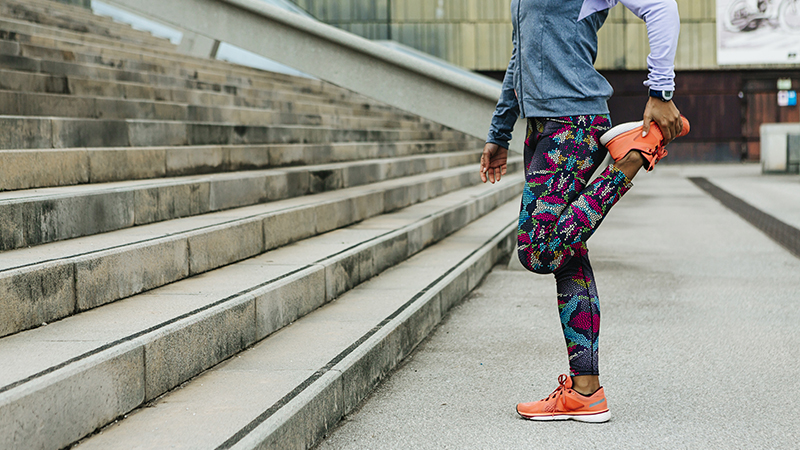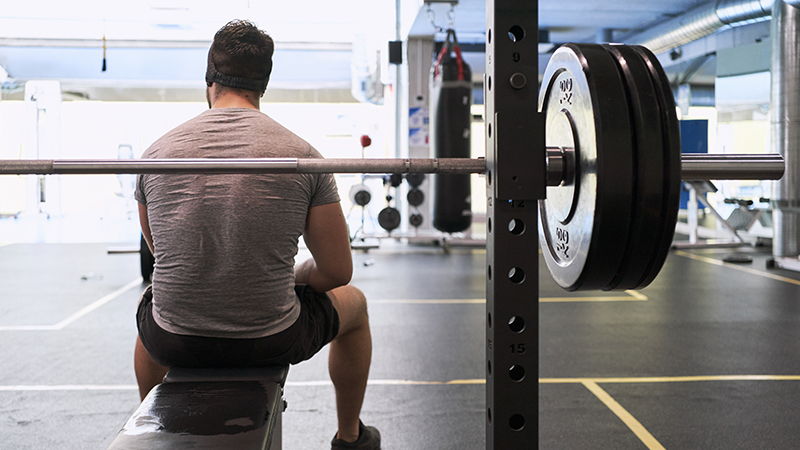Protect Yourself From Pickleball Injuries
Tips From an Orthopaedic Surgeon to Keep Injury Out of Play
Published July 2023
Even though pickleball has been around since 1965, it’s only recently exploded in popularity. The sport, a cross between badminton, tennis and Ping-Pong, can be played by almost anyone, which broadens the playing field. In the United States, there are an estimated 6.9 million pickleball players or “picklers.”
Most of the acute pickleball injuries we treat are from falls.— Mark P. Smyth, MD
While this popular sport offers great exercise and social connection, it is important to be aware of the potential for injuries. According to Mark P. Smyth, MD, an orthopaedic surgeon at Northwestern Medicine, pickleball injuries typically fall into one of two categories:
Acute
Injuries that happen suddenly and can be more severe, including:
- Bone fractures
- Tendon tears and ruptures
- Knee ligament and meniscus tears
- Ankle and wrist sprains
- Calf, Achilles and hamstring strains
- Rotator cuff strains
Chronic
Injuries that usually result from overuse of a body area and develop gradually over time, including:
- Tendinitis of the elbow (“tennis elbow”) or rotator cuff
- Bursitis
- Knee and shoulder arthritis
- Back pain
“Oftentimes, acute injuries happen with players just starting the game. It can be more difficult for them to adjust, handle the side-to-side motion and go back for a ball,” explains Dr. Smyth. “Most of the acute pickleball injuries we treat are from falls, and most of the chronic pickleball injuries we treat stem from repetitive motion.”
Dr. Smyth says people don’t always realize that pickleball is a fast-paced game with quick movements. “You do have to be relatively well conditioned to take on the tasks associated with the game,” he says.
Prevention Measures
There are several things you can do to help prevent pickleball injuries:
- Start slow and know your physical limitations, such as pre-existing injuries or conditions. Knee or shoulder arthritis can be aggravated by quick movement, for example. No matter your level of play, listen to your body and take breaks when you need them.
- Warm up for at least five minutes before and after play. Your warm-up should include stretching the muscles in your:
- Calves
- Thighs
- Back
- Shoulders
- Elbows
- Ankles
- Wrists
Stretching will help to improve your flexibility and range of motion, and it will also help to prevent muscle soreness. Your pre-game warm-up should also include light jogging (in place or around the court) as well as some light practice volleys with your partner.
- Stay active throughout your daily life, not just when you play pickleball. This will keep your muscles conditioned and ready for when you do play.
- Wear appropriate-fitting shoes designed for tennis or pickleball that provide side-to-side support, shock absorption and traction to avoid sprains, falls and fractures.
- Be aware of your playing surface. Remove any debris, such as gravel and rocks, and notice any cracks in the court before you start to play. Avoid play when the surface is wet.
- Consider taking pickleball lessons to learn the game and ensure your form is correct. An instructor can also help fit you with the correct sized paddle and grip.
- Drink plenty of fluids before, during and after play to stay hydrated.
What If Injury Happens?
If a pickleball injury happens, stop playing to avoid more damage. Dr. Smyth recommends using the RICE method on the affected area. “It’s a great first line of treatment,” he says.
- Rest: Immediately rest the injured area.
- Ice: Place ice (or frozen corn or peas) on the injured area to reduce swelling. Continue applying ice for 10 to 20 minutes every two to three hours during the first 24 to 48 hours after your injury.
- Compression: Wrap the injured area with an athletic or elastic medical bandage to help reduce swelling. If you feel numbness, tingling, more pain or swelling, the wrap may be too tight.
- Elevation: Raise the injured area above the level of your heart. This can help reduce pain and swelling. A pillow is the perfect prop.
Seek medical attention if you are experiencing any:
- Severe pain, swelling and bruising
- Discolored skin around the affected area or redness spreading out from the injury
- Inability to move or put weight on the affected bone, joint or body part
- A visibly misshapen limb, which can be a sign of a bone break
- Ongoing pain or discomfort despite an adequate period of rest
“Enjoy the game of pickleball, but know your body and your physical limits,” says Dr. Smyth. “If you are injured, the worst thing you can do is to keep playing and push through it. You certainly can make problems worse — and put your court time at risk, as well as other activities that you love to do.”






